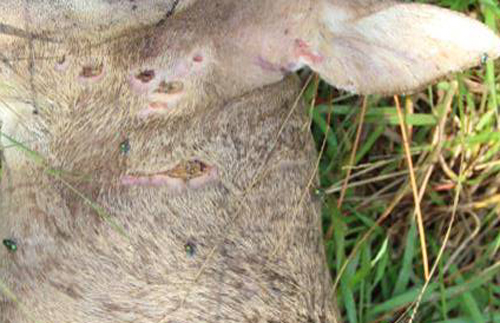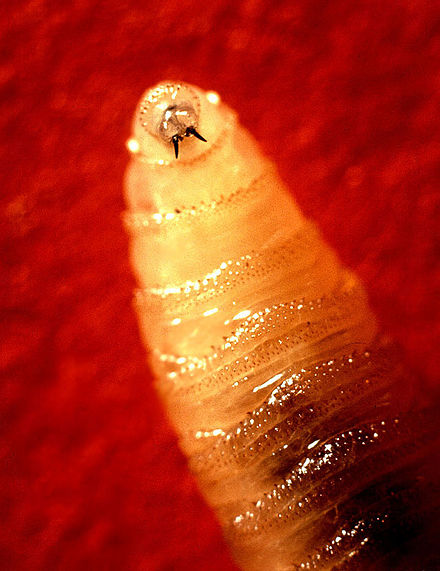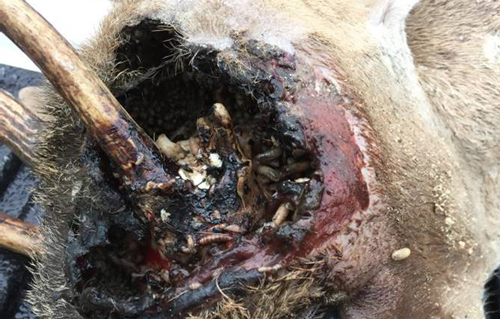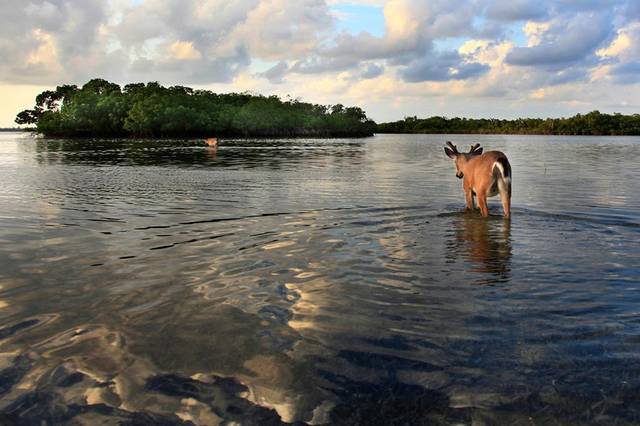Warning: Some images are not for the faint of heart or weak of stomach. Tread lightly.
The Key deer, a whitetail subspecies found only in the Florida Keys, is the smallest species of deer in North America, but something even smaller is threatening its population. The deer are already listed as endangered by the U.S. Fish and Wildlife Service; now a flesh-eating insect is pushing them even closer to the brink of extinction.
The deadly New World screwworm, actually a fly that lays its larvae in the open wounds of warm-blooded animals, is taking its toll on the Key deer. An outbreak was confirmed September 30 by the U.S Department of Agriculture. As bucks began rutting, the antlers of each deer would cause open wounds the screwworms quickly took advantage of. Thirty deer have already been found dead within the last month, with another 30 deaths attributed to the insects over the summer.

Screwworms are actually flies that lay their larvae in the open wounds of animals. (Photo: University of Florida Entomology & Nematology Department)
The death toll reportedly reached 114 on Tuesday, with some deer dying directly from the screwworm and some infected deer being euthanized by wildlife officials.
Screwworms cannot travel far in and of themselves, only being able to fly short distances. Their hosts, however, could potentially move the larvae across vast areas into new, previously unaffected areas.

A New World screwworm larvae, a flesh-eating insect responsible for the deaths of dozens of Key deer. (Photo: Wikipedia)
Such is the case with Key deer. The screwworm infestation is currently limited to the Keys, specifically Big Pines Key and No Names Key, but officials worry that the insects could pass from the deer to pets on the Keys, or possibly even to whitetails on the mainland. A few pets and whitetails have reportedly shown signs of being infected, but no official word has been given if the screwworms have jumped species.
On October 3 Adam Putnam, Florida’s commissioner of agriculture, declared a state of emergency for Monroe County, the county encompassing the Keys and a large portion of the Everglades. As part of the declaration, the area is under quarantine to prevent the transportation of animals out of or into the county. Only the State Veterinarian can give a citizen permission to “take, transport, or drive” an animal across the quarantine’s line.

The ultimate result of a screwworm infection. (Photo: University of Florida Entomology & Nematology Department)
The Key deer’s close proximity to humans and its protected status from hunting means many of the deer are semi-tame, regularly feeding in islanders’ yards and coming close enough to be petted. Their boldness makes the work of wildlife officials and volunteers much easier as they work to rid the deer of the screwworms. Workers feed the deer a piece of bread with a dose of doramectin, a veterinary drug used to fight parasites, on top. The deer are then sprayed with various colors of paint to signify they have been given bread, with nearly 2,000 deer treated so far.
Total eradication of the herd’s screwworm infection could take as long as six months, but the number of dead and dying deer has already begun to decrease.
The screwworm was a veritable plague in the U.S. decades ago, claiming the lives of countless animals and costing the country’s livestock industry millions every year. In the 1950s the USDA developed a form of radiation to act as birth control, sterilizing the male worms and preventing eggs from hatching. As a result, no infestations have been recorded in the last 30 years.
Screwworms are thought to have been eradicated in North America, but they still exist in South and Central America. Officials believe the new infestation in the Keys originated from screwworms brought from one of those regions, but exactly how the insects reached the islands has yet to be determined.

